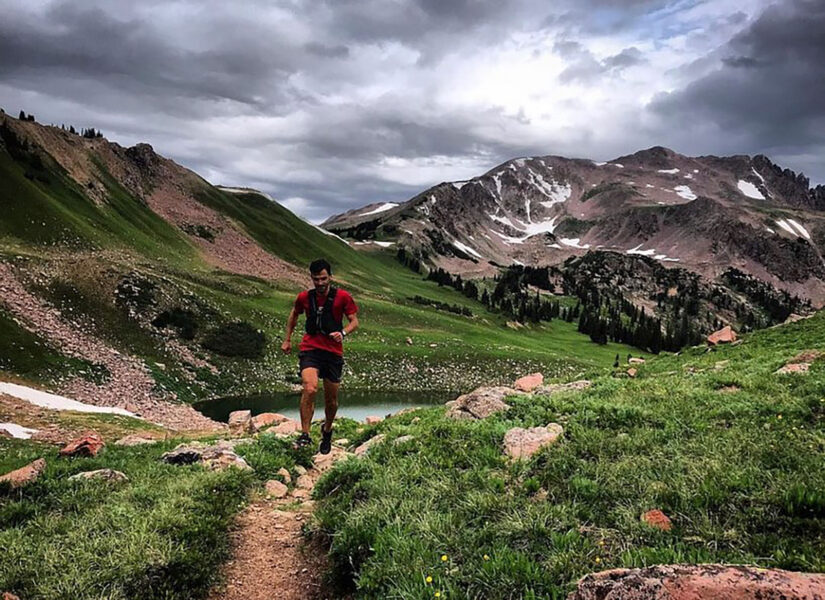
Mark Marzen is a running coach with performance clinic Golden Endurance and a podium finisher at ultramarathons all across the country.
It’s time to address the age-old argument: East is the beast or West is best? But we’re talking about something way more important than culture here; we’re talking about practice. Running practice, that is. How do the two leading characteristics of each environment — humidity in the east and altitude in the west — compare in terms of the effect on running training and performance?
As a primer, let’s get clear on what we’re working with here.
Humidity refers to the amount of water vapor in the air. The higher the percentage, the “wetter” the air feels. Combined with high temperatures, it’s akin to taking a warm bath. Heat hurts running performance because it raises body temperature, which leads to an increase in heart rate and degree of exertion. In layman’s terms: Things feel harder because your body’s working harder at baseline. But humidity makes problems significantly worse. High amounts of moisture in the air essentially renders sweat — your body’s main cooling tactic — useless. It never gets the chance to evaporate off your skin, which is what alleviates the effects of heat. Now those hot temps feel even hotter — not exactly ideal running conditions.
And altitude isn’t ideal either. Air composition bears the blame once again. The higher you climb, the less oxygen in the air and available in your blood for your muscles. This results in your muscles having to work harder for the same output compared to how they function at lower elevations with more oxygen. The decrease in oxygen and air pressure also makes breathing more difficult. Runners will notice themselves breathing more laboriously to account for taking in less oxygen with each inhale. Both heart rate and blood pressure rise in the meantime. What’s more, runners often battle fatigue before they even start their watches due to the effects of altitude on sleep. The relative lack of oxygen in the air can trigger unsteady breathing patterns that interrupt a good night’s zzz’s.
Long story short, both humidity and altitude throw the human body for a loop. Add running into the mix, and you’re bound to experience some unpleasant side effects. That much is inevitable. The real question is: Who’s worse off?
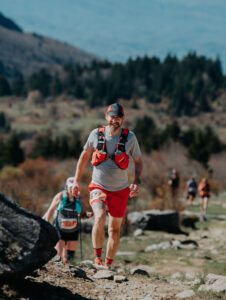
Runners competing in the Grayson Highlands 50k max out in the Virginia mountains at around 5,000 feet in elevation, which pales in comparison to the altitude of some Western races.
Everyone likes to say that they’re working the hardest under the toughest conditions. Runners (perhaps the most masochistic of all athletes) especially love to play the game of who suffers most in the name of their sport.
But in this competition between the coasts, those with extensive experience in both climates helped us clear the air.
Altitude Versus Humidity
Having grown up in the oppressive humidity of Southern Virginia summers before jetting west to Colorado, where I now live and train at 6,500 feet on the daily, I know a thing or two about these two wildly different experiences. My toxic trait as a runner is always believing that I’ll handily crush any workout I perform back east while visiting family.
But my superior high-altitude attitude doesn’t last long.
I hype myself up every single time for the ease of sea-level running … only to find myself dry-heaving on the side of the trail after losing half my body weight in sweat. I finish each of those runs thoroughly demoralized and full of a renewed respect for the impact of humidity.
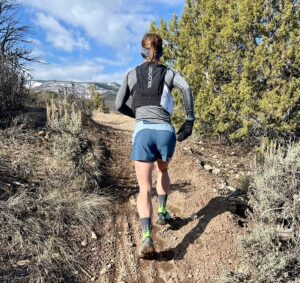
Lucie Hanes was born in Virginia but now lives in Colorado.
The honest truth is that there are downsides to both altitude and humidity. The body usually adjusts to whatever environment it spends the most time in. Humidity humbles me so heavily these days because I’m no longer used to it. Altitude will do the same for a flat-lander.
Stick with me here: I promise that isn’t a cop-out answer. What really separates altitude from humidity isn’t the initial impact on running performance. It’s everything that comes after.
The Similarities
Mark Marzen — running coach with performance clinic Golden Endurance and a podium finisher at ultramarathons all across the country, including the Old Dominion 100 Miler in Virginia and the Never Summer 100k in Colorado — notes that both altitude and humidity will put runners through the wringer at first.
“You’ll experience a lower max aerobic output in either scenario,” he explains, “meaning it takes a much higher effort to run the same pace you’d do easily in more moderate conditions.”
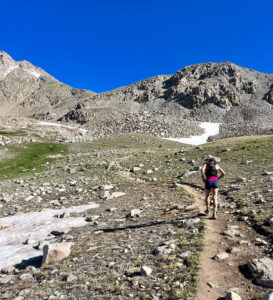
Ultra runner Rachel Lemcke has performed well at races on both coasts.
Rachel Lemcke — who took first female at the 2021 Old Dominion 100 and fifth at the notorious Run Rabbit Run 100 in 2022, as well as being the course record holder at the Hellgate 100k++ — agrees that each can feel equally brutal, especially in the beginning.
“Thinking back on my first few summers in Virginia,” she says, “I thought my fitness was declining. Then on a magic moment in late September I would feel good on a run and realized I was actually in good shape … it was just the humidity!”
She experienced a similar setback upon moving to Colorado.
“I never felt fast but kept working hard,” she says. “When I raced at sea level a few months later, only then could I feel the difference when running uphill and carrying on conversations.”
The Differences
But both Marzen and Lemcke are of the same mind when it comes to adaptations within each environment. Marzen posits that humidity ultimately presents the greater challenge for runners because it’s more difficult to manage as the miles go on.
“With altitude you can navigate the effects by dialing back your effort, as well as consuming more nutrition and hydration. The side effects also tend to fade quickly as soon as you drop back down in elevation,” he notes. “With humidity it becomes more about body temperature. If you screw that up, it can be super difficult to come back from.”
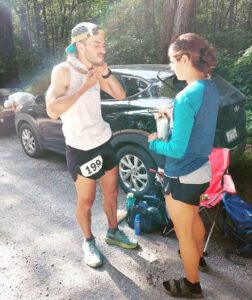
Mark Marzen notes how hard both altitude and humidity can be on a runner.
In the same vein, Lemcke doesn’t remember ever feeling like the grueling Virginia summers ever eased up. Every run felt like a slog through air as thick as mud. But after 10 months of living at altitude in Colorado, she did notice a palpable difference in her performance at high elevations compared to the early days.
That being said, runners might have a harder time preparing for altitude ahead of a big race than humidity.
“The only true way to adapt to altitude is by getting up high,” Marzen explains. “You can’t really manipulate your training to experience it authentically otherwise. Altitude chambers and tents can have some effect, but in the end, I don’t recommend them because they’re most often used overnight. Sleeping this way can impact recovery, and that’s more important in the long run.”
Humidity, on the other hand, can be more easily replicated from a distance via sauna protocols.
“Seven to 10 days of repeated sauna exposure, maintained with three to four days a week from there on out until race day, can make a big difference in humidity acclimatization,” Marzen says.
The Verdict
Lived experience suggests that both altitude and humidity have debilitating effects on running performance at the onset. Lemcke even believes that altitude is acutely harder for runners new to higher elevations. And Mika Thewes, who broke the course record in the Cloudsplitter 100 and won the 2021 Bigfoot 200, confidently asserts during an appearance on the Ridge RUNers Podcast that “altitude to a certain extent isn’t too bad,” but there comes a point once you reach a certain threshold (~12,000 feet for her) where there’s a higher price to pay than in humidity.
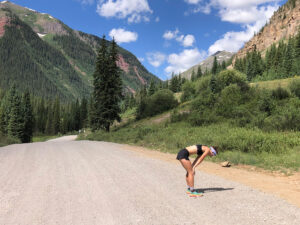
The Western altitude can deliver a knockout blow at times, but even after several summers in Virginia, Rachel Lemcke said it never felt like the summer slog got easier.
But over time, humidity seems to win out as the more consistently cruel mistress. The complexities involved with humidity, such as fluctuations in core temperature and acclimation complications, perpetuate its impacts.
Tips for Running at Altitude and in Humidity
Acclimating to altitude might not be convenient, but at least it’s simple. This is the permission slip your teenage self would envy: Get high, as often as you can. Exposure to altitude holds the key to acclimatization. Nothing else will do the trick nearly as well. Plan to include training time at altitude leading up to races or big days in the high mountains.
Humidity isn’t quite so cut and dry (pun intended), which means you have more opportunities for acclimation at your disposal. Utilize saunas to mimic humid conditions and trigger changes in thermoregulation ahead of time. Keep up with your hydration needs by not only drinking plenty of water and electrolyte beverages throughout your run, but also well beforehand. Pre-cool your body and reduce your core temperature ahead of time with crisp beverages, moist towels, or even cold water immersions.
While running, Lemcke recommends taking advantage of any waterways along your route for a quick dunk or splash to the face.
Dr. Stacy Sims, expert in female athlete physiology, emphasizes in her book, ROAR, that women need to take extra precaution in humid environments because of the physiological differences between the ways that men and women experience heat and humidity.
“Not only do we sweat less,” Sims distinguishes, “we also start sweating later than men.” This makes it more difficult for women to prevent overheating in humid conditions than their male counterparts.
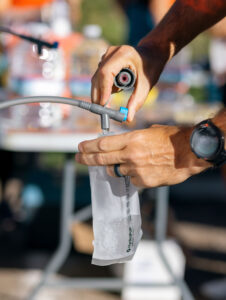
Runners hydrate after a loop at Colorado’s Mount Galbraith. (Image by Echos Communications)
With this in mind, female runners need to put even more emphasis on hydration and cooling methods when running in such environments.
“To perform well, staying on top of hydration is essential,” Sims instructs. “Body water is your natural engine coolant. If you are slack on your hydration, you compromise your blood volume, which in turn negatively affects your blood circulation and leaves you with even less fluid for sweating.”
In either scenario, pay close attention to your fueling and hydration habits. Both altitude and humidity impart more stress than usual onto the body. Provide it with plenty of energy to manage that stress best. At the end of the day, nothing beats smart self-care tactics when it comes to getting out of your comfort zone.
Lucie Hanes is an avid writer and adventurer on rock and trail with a passion for sharing her outdoor enthusiasms through journalism and mental strength consultation.
 Your Privacy Choices
Your Privacy Choices